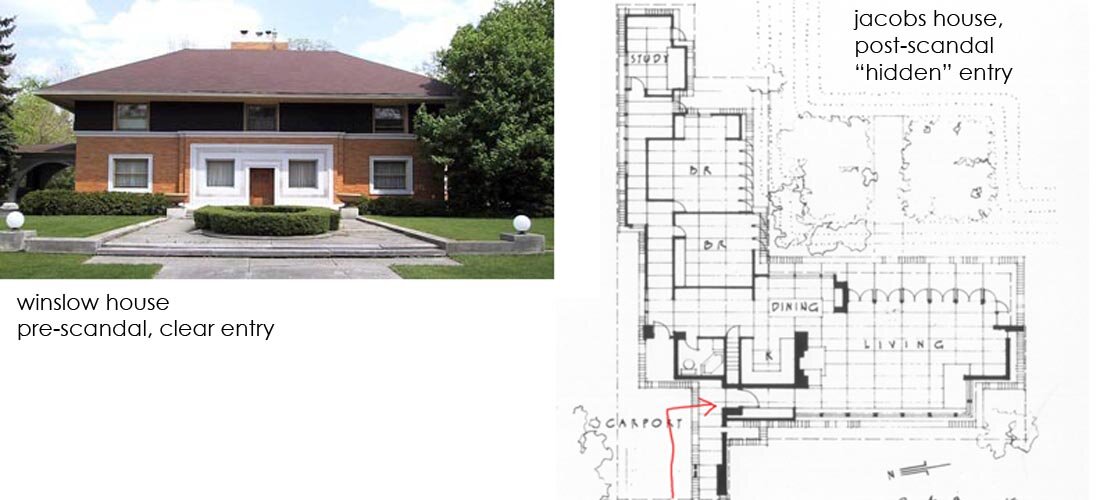One of the ways that I approach projects is to try to find meaningful relationships between the different pieces of an architectural program. This kind of scheme can yield very interesting and sometimes surprising results, but for a single family house, can often be very limiting as well. For a house there is almost always a simple division between public spaces and private spaces that can be established. Conventionally the bedrooms and bathroom and sometimes office are more or less private and kitchen, living room and dining room are more or less public. For each client, there will be a different attitude toward the relative public/private aspects of these spaces with some clients drawing little, or no distinction between these categories. These relationships are also of course influenced by fashion, family structure and the shifting relationship of parents to children, and family to society. In his Ten Books on Architecture, Alberti spoke of these same relationships and the nature of the public/private distinction.
public private plan
Of course what begins to make a project particularly interesting is when the client's notion of this public/private relationship is altered in some way. I have had clients that consider the family room very private, a sanctuary for only the immediate family. Other clients consider this a party room for all comers. (After Frank Lloyd Wright's very public marital scandals, it is probably no coincidence the entries to his houses become increasingly hidden and private).
Wright entries
For as much as different forms of media have possibly broken down and subverted a sense of privateness within a home, the distribution of relationships between rooms still remains a fundamental architectural problem. That wireless communication has become so dominant only increases the tension of public/private as media devices and computers are no longer confined to a single office or study space.
Increasingly the spaces we design are in private/public flux. There are many larger rooms that have smaller niches and little window seats where a child can be doing homework online while other siblings are watching a DVD and parents are emailing the office. What is striking is how similar this kind of room reminds me of the Victorian era parlor where an open rooms contained a piano in one corner, a window seat for reading and a small setee for conversation, all simultaneously occupied. The mid-century house with a single room dedicated to table or a television seems to be fading in favor of the room whose space is not dedicated to single function.
PP LR 01
The above photo is from a large renovation and addition we did a few years ago and is a bench over storage drawers, projected outward to the view of the mountains.
Like sitting in a coffee shop and reading the paper, the house is increasingly becoming a place to be in private while in public. I almost always try to find opportunities within the structure of the house and family to find smaller, more intimate spaces that are still open to the larger room. The best place to study these relationships may be not a house at all, but the design of restaurant booths and banquettes.
Arugula
Arugula Restaurant in Boulder, Colorado, designed by M. Gerwing Architects with a long, open banquette in the main dining area on the right and smaller, more intimate booth seating closer to the bar further back. You might be able to see that the booth tables and booths are also up one step from the rest of the restaurant, making a bit more compression and giving a better view over the other diners. The booths here project inward from a smaller, more protected edge. This private-while-in-public situation is very popular with restaurant patrons, although the lack of flexibility is often frustrating to the proprietors.
As I mentioned, the conventional notion of a room dedicated to a single use - dining room, bedroom, etc. - seems to be withering as we find ourselves multi-tasking in every room. In a sense, this makes for more responsive, multi-tasking rooms, not unlike the frontier cabin where a single room served every family function, public and private. With an open mind and a willingness to challenge conventional notions of domesticity, homeowners may embrace these concepts and simultaneously build smaller, more sustainable buildings that better reflect the multi-dimensional lives that we increasingly inhabit. The public-private binary gives way to a more subtle crafting of a full spectrum between those extremes lived out is a single room.
by Boulder architects M. Gerwing Architects




